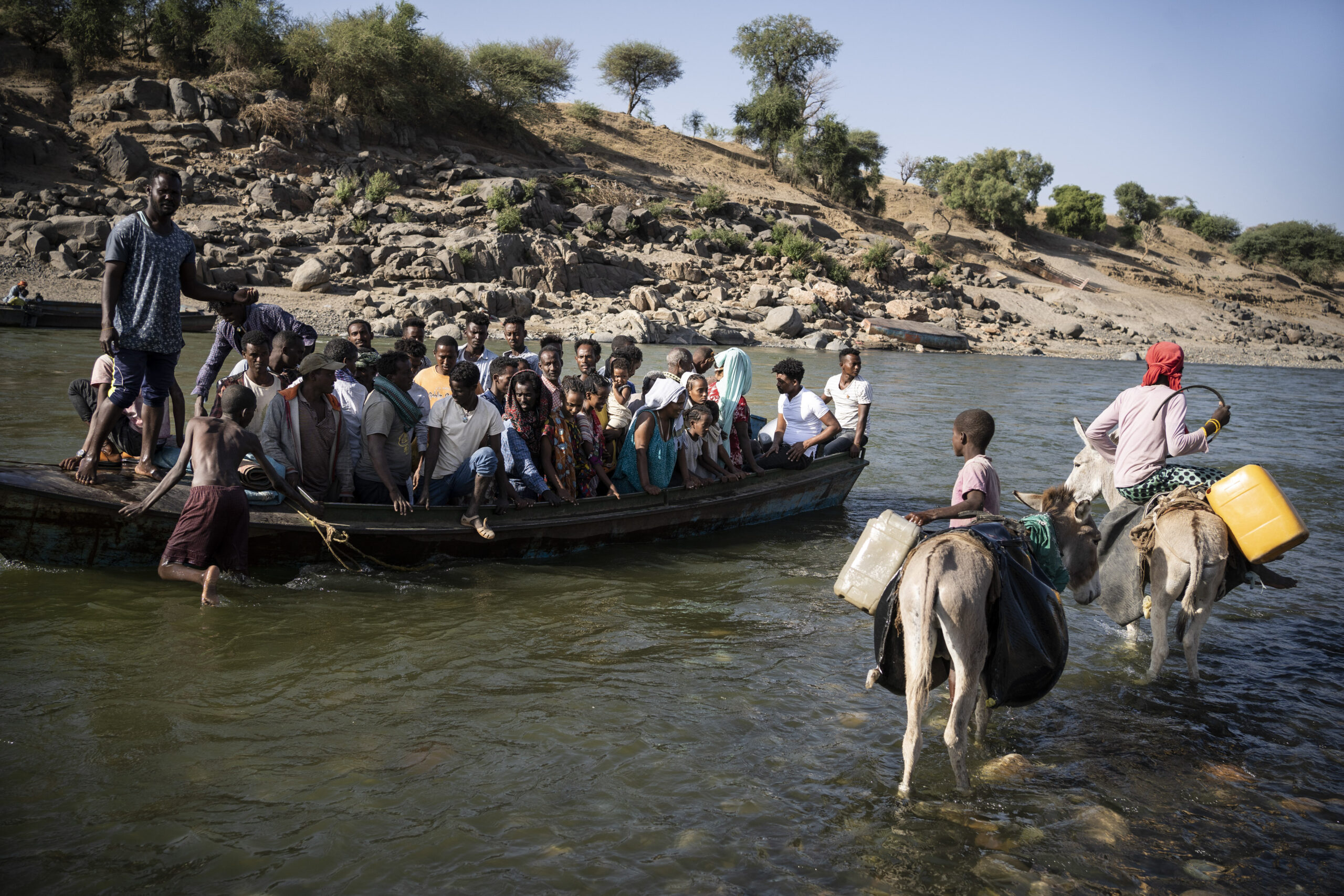As conflict continues in Ethiopia’s Tigray, over 50,000 have fled to Sudan in search for refuge. Funding from Denmark allows UNHCR to quickly respond to the deteriorating situation.
Newly arrived Ethiopian refugees wait to receive food and water, in abandoned shelters in the Um Rakuba camp. ©UNHCR/Will Swanson
Refugee arrivals to Sudan had reduced dramatically in 2020, but since conflict broke out in Ethiopia’s Tigray region in November, more than 56,000 people have crossed the border into eastern Sudan, looking for safety.
The Ethiopian refugees arrive with little more than the clothes on their back, hungry and exhausted, having walked for days to reach safety. They share stories of their homes being looted, sexual violence against women and girls, and armed groups forcing recruitment of men and boys.
As the refugees cross the border to Sudan, they are registered and documented by UNHCR. This allows the UN Refugee Agency to trace and reunite families that have been separated during the chaos of conflict, and identify and support people with specific needs, such as unaccompanied children, people who are disabled, and the elderly.
Sudan has long been a host country to over a million refugees and asylum-seekers, as well as almost two million internally displaced people. Eastern Sudan, however, had not seen such a sudden influx in decades, and so the need for essential services remains high. UNHCR is quickly distributing aid to meet the immediate needs of those arriving in Sudan, by providing temporary shelters in transit centers, food, clean water, and medicine.
With the speed of the arrivals, the refugees risk ending up in overcrowded conditions. The Um Rakuba refugee camp is quickly reaching full capacity and UNHCR, together with partners, is working to relocate refugees from reception areas to a new camp site. To date, 580 refugees have already been relocated.

Ethiopians flee to Sudan to take shelter. © UNHCR/Olivier Jobard
Denmark’s funding, an allocation of DKK 20 million from its Emergency Reserve Fund to the operation in Sudan, has reinforced UNHCR’s ability to continue helping new arrivals from Ethiopia. This means addressing health service shortages to survivors of gender-based violence, providing COVID-19 screenings, mental health and psychosocial services for children associated with armed conflicts, and setting up mobile clinics. UNHCR can also ensure that refugees are continuously transferred to new settlements.
“International support is essential to ensure that we can react quickly to the increased number of refugees arriving to Sudan from Ethiopia. This contribution from Denmark’s emergency reserve means that we can rapidly register newly arrived refugees and provide them with the protection and emergency aid they so desperately need,” says Henrik M. Nordentoft, UNHCR’s Representative for the Nordic and Baltic Countries.
Denmark as a donor to UNHCR
Denmark ranks among UNHCR’s top ten donors. In 2020, Denmark provided USD 101.4 million to the agency, out of which USD 34.6 million consisted of flexible, unearmarked funding. In addition, the Danish Emergency Management Agency has provided in-kind assistance to refugees affected by the crisis in the Tigray region.
Within its overall funding, Denmark annually contributes with an Emergency Reserve Fund, the flexibility of which allows UNHCR to quickly respond to emergencies in a manner that assists displaced people with critical protection needs and provides them with basic necessities to survive.
Share on Facebook Share on Twitter